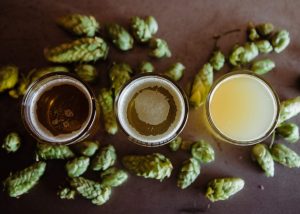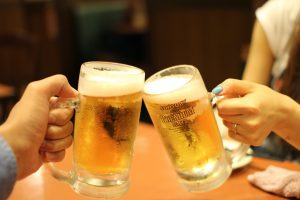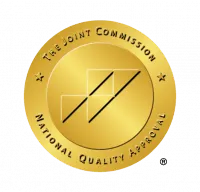Can I Drink Nonalcoholic Beer in Recovery?
When it comes to drinking nonalcoholic beer in recovery, you’ve probably heard mixed opinions.
Some people feel that nonalcoholic beers, wines, and liquors are a healthy alternative to alcohol in recovery. Others believe that any drink resembling alcohol—intoxicating or not—puts you at risk for relapse.
So, what is the truth about nonalcoholic and alcohol-free drinks? Can alcoholics drink nonalcoholic beer? Or is “near beer” dangerous if you’ve quit drinking?
Below, we’ll discuss the pros and cons of nonalcoholic beer, and whether or not it’s a good choice if you’re in recovery.
What Are Nonalcoholic and Alcohol-Free Drinks?

Alcohol-free and nonalcoholic drinks offer the experience of drinking alcohol without actually being intoxicating. Nonalcoholic beer is brewed to taste as close to regular beer as possible, minus the buzz.
Recently, there’s been a boom in other alcohol-free beverages as well. These include zero-alcohol wines and even liquors and spirits, crafted to taste like the real thing without actually being alcoholic. You may also encounter “mocktails”—blends of juices, syrups, herbs, and other ingredients that resemble cocktails, with no booze.
These alternative drinks can be a great way to keep a glass in your hand at a party, or beat the craving for a drink. But for some, the taste of these beverages may be more triggering than helpful.
Are Nonalcoholic Drinks Actually Alcohol-Free?
Ironically, nonalcoholic beer is not entirely alcohol-free. That’s because beer, by its nature, contains alcohol. In the United States, products using the “non-alcoholic” label can have up to 0.5 percent alcohol content.
On the other hand, there are now some beer options that are genuinely without alcohol. To find these, look for the phrase “alcohol-free.” This label is only allowed on products with no detectable alcohol.
How Many Nonalcoholic Beers Equal One Regular Beer?
Since nonalcoholic beer can have up to 0.5 percent alcohol, one regular beer is equivalent to roughly 10 nonalcoholic ones. This can vary, however. Light beer might be equivalent to six or eight nonalcoholic beers, while “near beer” with an especially tiny amount of alcohol might take 15 or 20 to match an ordinary brew.
Clearly, it would be pretty difficult to get drunk from nonalcoholic beer. But for some people in recovery, even a small amount of alcohol is not acceptable.
The Pros and Cons of Nonalcoholic Beer and Alcohol-Free Drinks
There is much debate about nonalcoholic and alcohol-free beverages in recovery. Some people feel that these drinks pose too big a risk, while others feel they are helpful.
The Pros of Nonalcoholic Drinks in Recovery:
- Switching to nonalcoholic beer to quit drinking may help you wean off alcohol.
- Alcohol-free drinks can help you beat alcohol cravings without actually relapsing.
- Drinks like “near beer” and mocktails let you enjoy a drink in social situations, and not have to feel left out.
The Cons of Nonalcoholic Drinks:
- The ritual of drinking itself can be triggering for some people in recovery.
- The taste of beer, alcoholic or not, may cause cravings for some people. In a 2013 study, researchers found that the taste of beer triggered a dopamine release in the brain. This chemical plays a role in habit development and addictive behavior.
When it comes to recovery, each person has their own set of cues that can cause cravings and drinking urges. For some people, the experience of drinking an alcohol alternative may help them stave off those cravings. For others, nonalcoholic beer might create stronger cravings for the real thing.
Nonalcoholic Drinks in Abstinence vs. Moderation

So, should alcoholics drink nonalcoholic beer? It ultimately comes down to what is comfortable or helpful for you, personally. But your chosen recovery approach might also make a difference.
Abstinence
There are many reasons why people choose to quit drinking completely. Some may feel that the only way to control how much they consume is to eliminate alcohol outright. Others may need to cut out alcohol because of liver damage, or other health problems.
If you’ve chosen abstinence, alcohol-free beverages might still be acceptable for you. But you might also decide that anything resembling alcohol whatsoever is off-limits. This could be especially true for nonalcoholic beer, which still contains a very small amount of alcohol.
Moderation
If you’ve chosen to cut back instead of quit completely, your approach to nonalcoholic beverages might be different. If you’re allowing a small amount of alcohol in your diet anyway, the trace amounts in nonalcoholic beer might not be harmful. It might also be a good tool in your arsenal for spacing out drinks, or sticking to your limits.
Many people find themselves in a “gray area” as drinkers—not identifying as alcoholics, but wanting to reduce how much they consume. Others find it easier to stick with recovery if they can still have a small amount of alcohol. Alcohol-free beverages could certainly help with this goal.
Is Nonalcoholic Beer Bad for Your Liver?
If you need to stop drinking for any liver-related condition, including cirrhosis, it’s best to avoid drinks with any amount of alcohol in them—no matter how small.
Nonalcoholic beer by definition can only contain up to 0.5 percent alcohol. However, one study found that this amount was still enough to cause dangerous blood alcohol levels in a person with end-stage liver disease.
Drinks that are completely alcohol-free may be perfectly fine if you have alcohol-related liver damage. However, it’s best to consult with your doctor before drinking nonalcoholic beer when you have cirrhosis, hepatitis, or any other serious liver condition.
Should Recovering Alcoholics Drink Nonalcoholic Beer? The Bottom Line
Many people fare well with nonalcoholic drinks in recovery, and many don’t. It all depends on your individual relationship with alcohol, and your personal recovery goals.
Before trying nonalcoholic beer or other alcohol substitutes, consider whether it would be helpful or triggering to consume one of these beverages. If you find the taste of beer or the ritual of drinking causes urges for a real alcoholic beverage, it may be best to avoid these drinks. But if “near beer” helps you socialize without craving alcohol, that’s also a fine decision.
At Ria Health, we support multiple approaches to recovery. Some of our members choose abstinence, while others choose moderation. What’s important is to find a recovery approach that works for you, and stick with it.
Learn more about how Ria Health customizes treatment for each individual, 100 percent from home.
Will insurance cover treatment? Verify Coverage
Have Questions? Call (800) 504-5360



